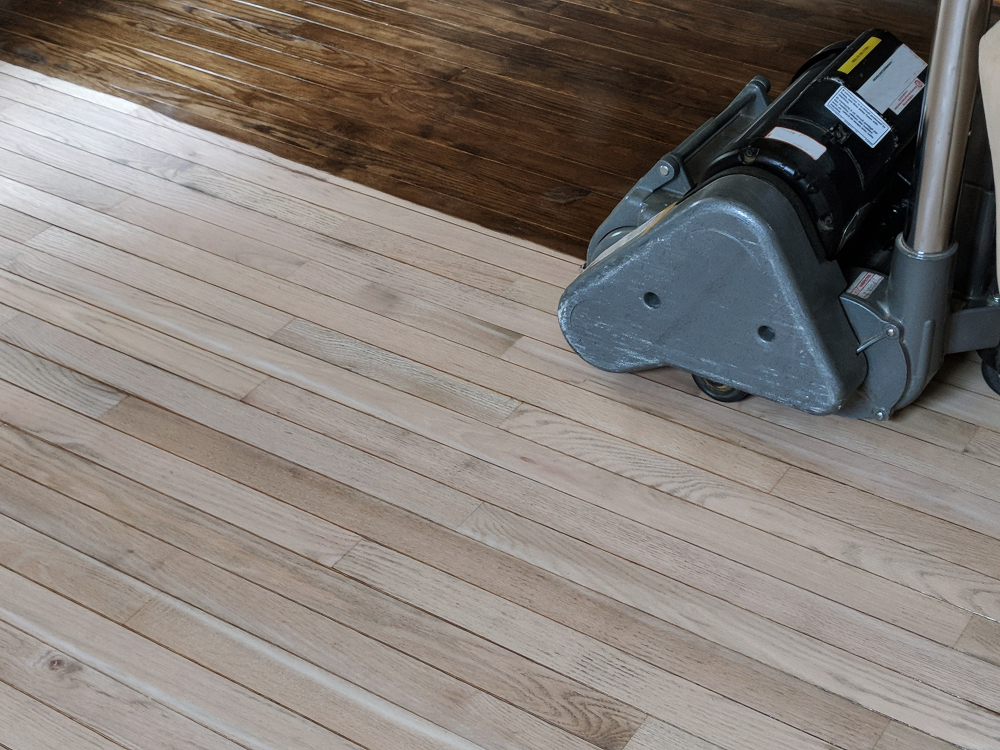What You Should Not Do When Refinishing Your Hardwood Floors

Refinishing hardwood floors can breathe new life into your home, making spaces look brighter, fresher, and more polished. However, the process requires precision, patience, and care. Missteps during refinishing can lead to costly repairs or even permanent damage to your beautiful hardwood floors. This guide will walk you through the common mistakes to avoid and the best practices to follow for a flawless finish.
Why Hardwood Floor Refinishing Matters
Hardwood floors are prized for their durability and timeless beauty. But over time, they can accumulate scratches, stains, and dull spots, diminishing their appeal. Refinishing hardwood floors is an excellent way to restore their natural luster and extend their lifespan. However, refinishing is a meticulous process that requires attention to detail, the right tools, and patience. Mistakes can lead to uneven finishes, sanding marks, and even structural damage. To achieve professional-quality results, let’s explore what you should not do when refinishing your hardwood floors.
Avoiding Mistakes When Refinishing Hardwood Floors
Skipping the Floor Preparation
Preparation is key to a successful hardwood floor refinishing project. Skipping the preparation phase is a common mistake, often leading to uneven finishes or persistent scratches that detract from the floor’s appearance. Proper preparation includes:
- Cleaning the Floor Thoroughly: Dust, pet hair, or dirt particles left on the floor can get trapped under the finish, creating a rough texture and marring the final look.
- Repairing Damage: Cracks, gouges, or holes should be filled and sanded before refinishing. Skipping repairs can lead to a patchy, uneven appearance.
Pro Tip: Remove any furniture, rugs, and baseboards before starting. Use a vacuum and a damp mop to clean the floor surface thoroughly before you begin sanding.
Not Sanding Properly
Sanding is one of the most crucial steps in the hardwood floor refinishing process. Poor sanding technique can result in uneven surfaces, visible sanding marks, and a less-than-professional finish.
- Skipping Sandpaper Grits: Sanding requires a progression of grits, usually starting with a coarser grit and moving to a finer one. Skipping a grit level can leave scratches and rough spots on the floor.
- Not Sanding Enough: Some people skip sanding altogether, thinking that applying a fresh coat of finish will cover up imperfections. However, this approach does not work. Sanding removes the top layer of the old finish, exposing fresh wood that’s ready for a new coat. Failing to sand properly will result in a finish that doesn’t adhere well and peels over time.
- Over-Sanding: Sanding too much can thin the floorboards, reducing their structural integrity. Hardwood floors can only be refinished a certain number of times, so each sanding should be done with care.
Using the Wrong Equipment
Using the right equipment is essential when refinishing hardwood floors. While it may be tempting to rent a basic floor sander, not all sanders are suitable for hardwood floor refinishing.
- Using an Orbital Sander Instead of a Drum Sander: Drum sanders are ideal for removing old finishes quickly and evenly, while orbital sanders are best for fine finishing work. Using an orbital sander for the entire floor can take much longer and may not yield a smooth, professional finish.
- Not Testing Equipment on a Small Area: Before using rented equipment on the entire floor, test it in a small area. This allows you to check if the equipment is working correctly and adjust settings as needed.
Pro Tip: Invest in high-quality sandpaper. Cheap sandpaper can wear out quickly, leading to uneven sanding results.
Rushing the Process
Rushing is one of the most common mistakes people make when refinishing hardwood floors. Refinishing is a time-consuming process that requires patience and attention to detail.
- Not Allowing Enough Drying Time: Each layer of stain or finish needs adequate time to dry before applying the next coat. Not allowing enough drying time can lead to a sticky, uneven surface, trapping dust and debris.
- Skipping Between-Coat Buffing: After each coat of finish, the floor should be lightly buffed or sanded to remove any imperfections. Skipping this step can leave the floor feeling rough and unpolished.
Pro Tip: Follow the manufacturer’s drying recommendations on the product label, but be prepared to add extra drying time in humid conditions.
Choosing the Wrong Type of Finish
There are various finishes available, each with its unique look and properties. Choosing the wrong finish can affect the durability and appearance of your hardwood floors. Here are some common pitfalls:
- Using Oil-Based Finishes without Adequate Ventilation: Oil-based finishes offer a rich, warm appearance but produce strong fumes that require adequate ventilation. Applying these in closed spaces without proper ventilation can be hazardous to health.
- Not Considering Lifestyle Needs: If you have pets, children, or high-traffic areas, look for finishes that offer added durability, such as polyurethane. Water-based finishes may dry faster but may not be as resilient as oil-based options for certain applications.
Pro Tip: Test a small section of the floor with your chosen finish to see how it will look and ensure it aligns with your vision before applying it to the entire surface.
Not Taking Proper Safety Precautions
Safety should never be an afterthought, but many people overlook it when refinishing hardwood floors. Neglecting safety measures can lead to accidents, health issues, and damaged flooring.
- Ignoring Dust Protection: Sanding creates a significant amount of dust, which can cause respiratory issues if inhaled. Wear a mask or respirator, and consider using a dust containment system to minimize airborne particles.
- Neglecting Protective Gear: Finish fumes and dust can irritate the eyes and skin, so always wear gloves, safety goggles, and a mask when refinishing.
- Overlooking Fire Hazards: Oil-based products are highly flammable. Dispose of rags and other items soaked in finish properly, as they can spontaneously combust. Place them in a metal container with water and take them to a hazardous waste facility.
Inconsistent Application of Stain and Finish
Applying stain and finish evenly is crucial for a professional look. Inconsistent application can lead to streaks, blotches, and uneven color, which can detract from the floor’s appeal.
- Using a Dirty or Old Brush: Clean, quality brushes are essential for a smooth, consistent application. Old brushes can leave streaks, dust, or loose bristles in the finish.
- Not Maintaining a Wet Edge: To avoid overlap marks and streaks, maintain a wet edge when applying the stain or finish. This means applying the finish evenly and consistently, so one section doesn’t dry before the next section is applied.
Pro Tip: Apply finish in small sections, working quickly but methodically to maintain consistency and prevent drying lines.
Overlooking Post-Refinishing Care
Once the refinishing process is complete, proper care is essential to preserve the new look and durability of the floor.
- Not Allowing Sufficient Curing Time: Newly finished floors require a curing period before heavy furniture is moved back in. Curing times can vary based on the finish used; some may take a few days, while others require up to a week.
- Skipping Floor Protection Measures: Place protective pads under furniture legs to prevent scratches and dents. Use rugs in high-traffic areas to minimize wear and tear on your newly refinished hardwood floors.
Refinishing Done Right: Final Tips for Success
Refinishing hardwood floors can be a rewarding project if done correctly. Avoiding common mistakes and following best practices will help you achieve a professional, durable, and attractive finish. Remember:
- Preparation is Key: Take the time to clean, repair, and properly sand the floor.
- Use the Right Tools and Techniques: Avoid cutting corners with cheap materials or rental equipment that isn’t designed for hardwood floors.
- Choose Your Finish Wisely: Pick a finish that suits your home’s needs and the level of maintenance you’re comfortable with.
- Don’t Rush: Allow sufficient drying and curing times for each coat to ensure a long-lasting finish.
- Safety First: Prioritize safety gear and proper ventilation at every step.
By taking these precautions, you’ll be well on your way to achieving a beautiful, professional-quality refinished hardwood floor that enhances the aesthetic and value of your home. Happy refinishing!

